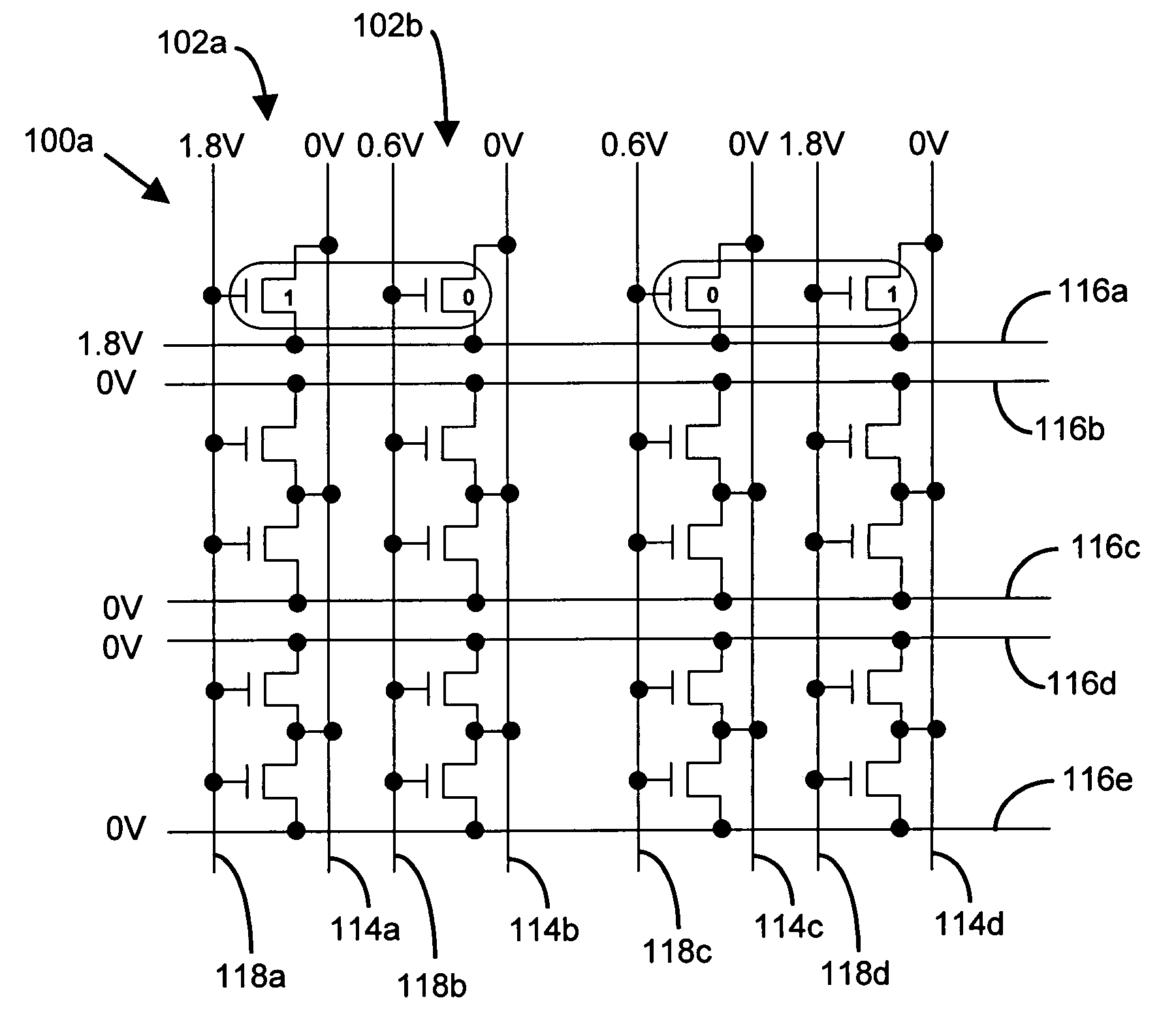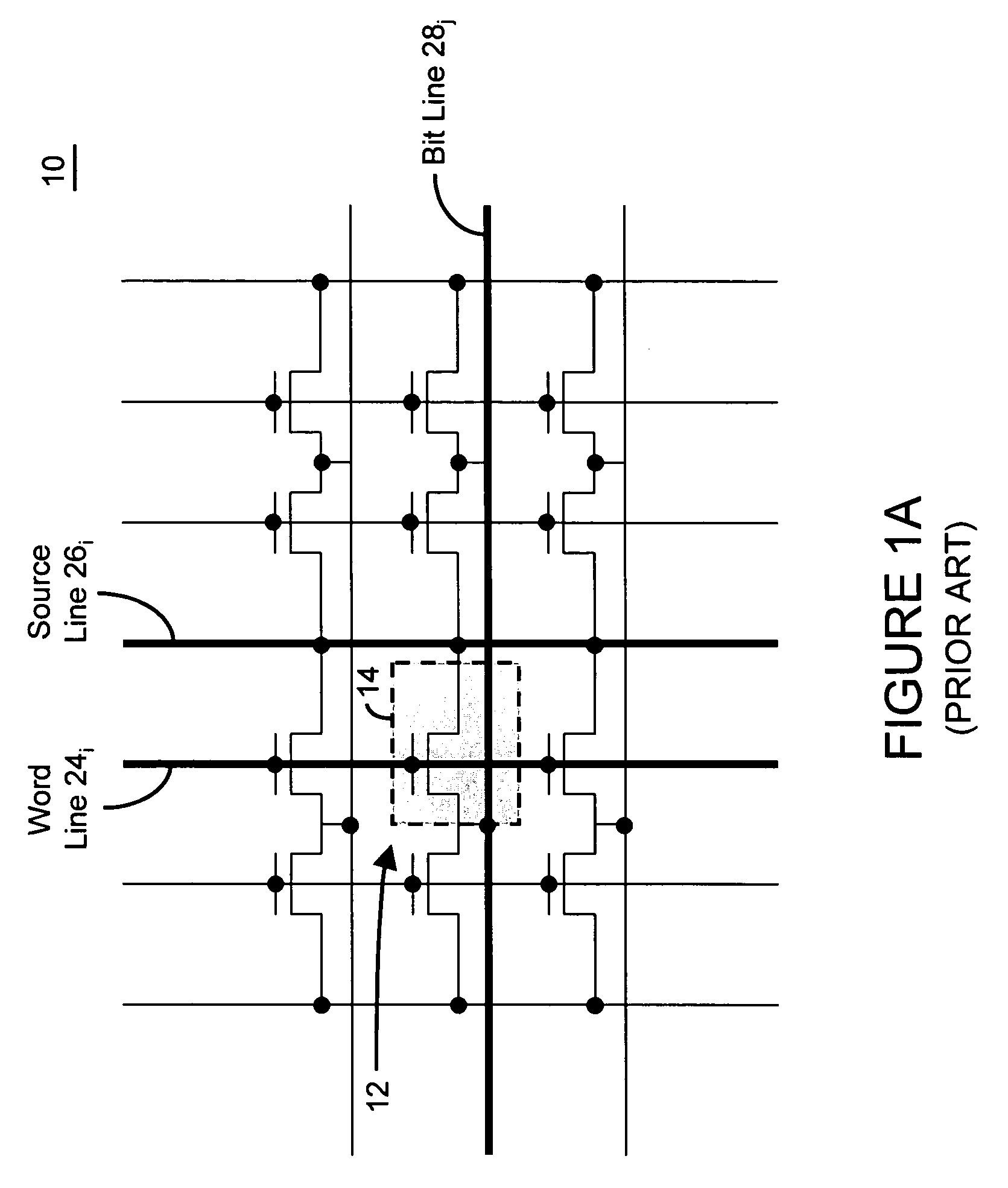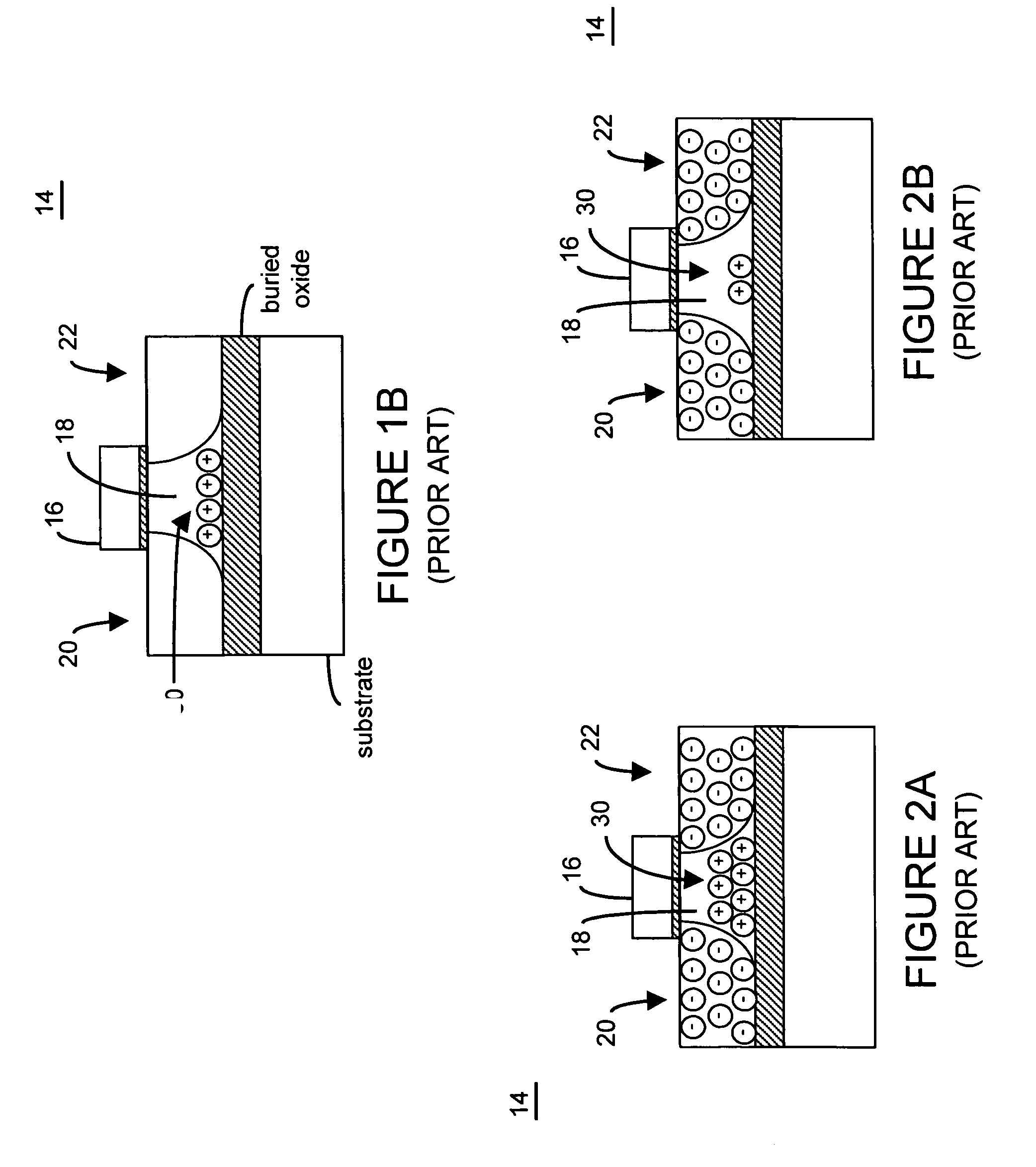Semiconductor memory cell, array, architecture and device, and method of operating same
a memory cell and semiconductor technology, applied in the field of semiconductor memory cells, arrays, architecture and devices, can solve the problems of complex and expensive integration of one transistor-one capacitor memory cells into logic devices, the source or drain regions of non-symmetrical devices are typically not interchangeable, and the device size is limited or restricted
- Summary
- Abstract
- Description
- Claims
- Application Information
AI Technical Summary
Benefits of technology
Problems solved by technology
Method used
Image
Examples
Embodiment Construction
[0054]There are many inventions described and illustrated herein. In a first aspect, the present invention is directed to a memory cell and technique of reading data from and writing data into that memory cell. In this regard, in one embodiment of this aspect of the invention, the memory cell includes two transistors which store complementary data states. That is, the two-transistor memory cell includes a first transistor that maintains a complementary state relative to the second transistor. As such, when programmed, one of the transistors of the memory cell stores a logic low (a binary “0”) and the other transistor of the memory cell stores a logic high (a binary “1”).
[0055]The data state of the two-transistor complementary memory cell may be read and / or determined by sampling, sensing measuring and / or detecting the polarity of the logic states stored in each transistor of complementary memory cell. That is, the two-transistor complementary memory cell is read by sampling, sensing...
PUM
 Login to View More
Login to View More Abstract
Description
Claims
Application Information
 Login to View More
Login to View More - R&D
- Intellectual Property
- Life Sciences
- Materials
- Tech Scout
- Unparalleled Data Quality
- Higher Quality Content
- 60% Fewer Hallucinations
Browse by: Latest US Patents, China's latest patents, Technical Efficacy Thesaurus, Application Domain, Technology Topic, Popular Technical Reports.
© 2025 PatSnap. All rights reserved.Legal|Privacy policy|Modern Slavery Act Transparency Statement|Sitemap|About US| Contact US: help@patsnap.com



